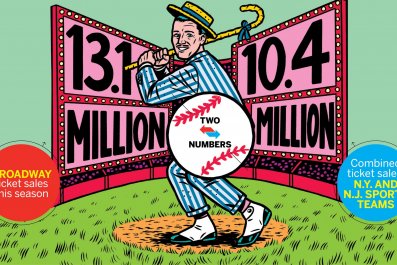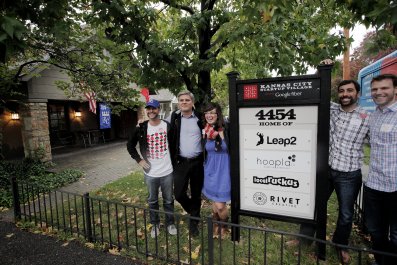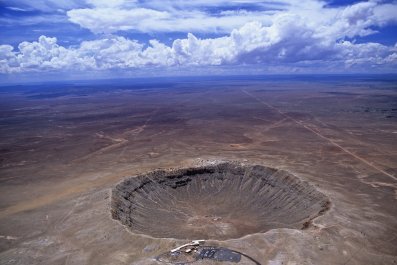I like bad beer. I also like good beer, but what I drink is mostly bad: Bud Light, Tecate, whatever somebody has left in my fridge. True story: One time, in college, I drank the dregs of a Natty Light keg from a party the night before out of an empty sour cream container because warm Natty Light was what was available when my hankering hit and we had no clean glasses. I'm not a fancy man.
But I understand people who exclusively drink good beer. And I feel for them, sometimes, because good beer ain't cheap. Bad beer's cheap. Intractable problem, right? Wrong, say the guys who founded Fizzics, a company that manufactures a gadget it says can make cheap, bad beer taste like a million bucks.
Fizzics CEO Philip Petracca says the device uses pressure and sound waves to turn bad beer good and good beer great. Step one: Put your open can or bottle inside the canister, which looks sort of like a black fire hydrant melted down on one side. Step two: Take the clear plastic tube that attaches to the device's silver lid, insert the tube into the beer and close the lid. Step three: Wait less than a minute while the sealed and pressurized canister exerts somewhere between 10 and 11 pounds per square inch of pressure on the beer.
The point of cans and bottles is to maintain pressure on beer—when you pop them open, you release that pressure, and the carbon dioxide in the beer separates from the other contents, forming bubbles. But by keeping the beer in a pressurized container and then maintaining a slow and steady flow of liquid with an onboard microcontroller, Fizzics prevents bubbles from forming during step four, which is: Pour the beer. Pull the handle and Fizzics delivers pure, foamless beer into your waiting glass.

That leaves step five: Add the foam, which is very important to the overall taste of the beer, and not just bartenders' way of shortchanging you. According to Tom Geordt, technical director of Micro Matic USA, a distributor of beer delivery systems, "Foam essentially captures and stores many of the flavor characteristics that are released during the pouring process."
Not all foam is created equal. Fizzics uses an oscillating sound pressure wave generator—the same thing doctors use to perform ultrasounds on pregnant women—to "agitate" the beer, which creates small, tightly packed bubbles (unlike a hand-pour, which produces bubbles of various sizes and shapes). Small, evenly spaced bubbles translate to thick, creamy foam. But does that make the beer actually taste better?
"You create a slightly different flavor in the beer," says Steve Parkes, lead instructor at the American Brewer's Guild and brewmaster at Drop-In Brewery in Middlebury, Vermont. "You sip the beer through a creamier head, which has concentrated some of the bitterness. The beer underneath should be a little crisper and have a slightly lower acidity and be just a shade less bitter."
Parkes adds, "Some people prefer it that way; others don't." One thing's for sure: "It looks better," he says. He's right: It does look better, as I discovered when I tried Fizzics last month. Did it taste better? I couldn't really tell the difference, but some of my colleagues insisted it did—and, like I said, I'm not fancy.
















